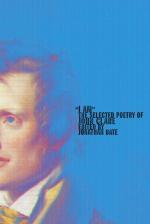|
This section contains 9,061 words (approx. 31 pages at 300 words per page) |

|
SOURCE: "Clare's 'Child Harold,'" in Poetic Madness and the Romantic Imagination, Pennsylvania State University Press, 1996, pp. 254-75.
In the following essay, Burwick studies the poetry written by John Clare during the years he spent in insane asylums. While acknowledging that it is impossible to ascertain whether or not Clare was truly mad, Burwick traces the shift in the tone in Clare's poetry from a Wordsworthian one to a Byronic one.
When Thomas De Quincey wrote on John Clare for the Edinburgh Review, he assumed the role of apologist. The fits of severe depression that Clare had suffered in 1824 De Quincey readily diagnosed as an "affection of the liver," a morbid reaction to the tumultuous and licentious habits of London, a mode of life for which the "Peasant Poet" was ill-prepared. As De Quincey saw it, Clare was a Wordsworthian poet of nature, who thrived upon "his own...
|
This section contains 9,061 words (approx. 31 pages at 300 words per page) |

|


